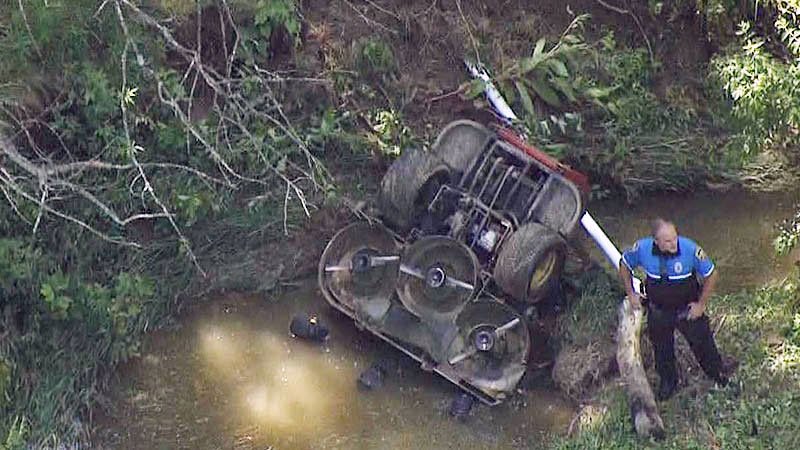
Even the most unimaginable tragedy can give way to a teaching moment.
Workers at two golf courses in two states were killed within days of each other, serving as stark reminders to review existing operator safety protocols with staff where such programs exist, and establish them where they do not; and make sure employees follow them.
A worker at Normandie Golf Course near St. Louis was killed July 23, when the mower he was operating went down and embankment and ended up in a creek, pinning him underneath.
Aerial imagery on St. Louis news outlets shows what appears to be a large zero-turn mower overturned in a creek bank.
A worker at Chicago Highlands Golf Course in Illinois was killed when a spray tank on a unit he was operating fell on him.
Golf course personnel are tight-lipped on the details while investigations continue and the eventual threat of a lawsuit looms.
It was unclear whether the operator of the mower was wearing a seat belt, or if he had been ejected and trapped beneath the mower. A respiratory therapist at a local hospital playing golf at Normandie at the time of the incident told news outlets that she responded to the scene to offer assistance, but that the worker appeared to have been trapped underneath the mower for some time.
It is common procedure for the U.S. Occupational Health and Safety Administration to get involved early and conduct its own investigation into whether an employer is providing a safe work environment for its employees, or if it is negligent in its efforts to do so, opening the gate for civil action.
A written policy formalizes everything. But if you have a policy but an employee doesn't follow it, are you complying?
With the safety features built into golf course maintenance equipment and the proliferation of safety training programs at golf courses, it is difficult to imagine that such a tragedy can still occur, but it seems like this story, or one similar to it, pops up a couple of times every year.
Each incident is a reminder to review safety procedures with your team with the goal of avoiding a similar tragedy.
Rollover protection systems have been standard on new maintenance equipment for years, and when used in conjunction with a seatbelt are more than 90 percent effective at saving lives, according to the Department of Labor. That number drops to about 70 percent when seatbelts are not engaged with ROPS use.
Mickey McCord, principal of McCord Golf Safety and Services, said a common cause of mower-related injuries and deaths occur when the operator does not use a seat belt, thinking they can escape from the machine if it begins to tip over.
"The biggest issue is guys not wearing seatbelts with ROPS," McCord said. "I've had discussions with guys who are adamant about it because they are afraid of being trapped under that equipment. I tell them they're not going to get trapped if they can keep their heads for a minute and undo the seatbelt. If that mower rolls over on you without seatbelts, then you really are trapped by that equipment. I'm telling you, I hear it all the time."
McCord says it is important to have written protocols in place that reflect proper ROPS use, but it is equally important to make sure employees are in compliance.
"A written policy formalizes everything," he said. "But if you have a policy but an employee doesn't follow it, are you complying?"
Some other tips for safe mower operation on sloped areas include:
> Using a specialized mower, such as a Ventrac, on inclines of 25 percent or more.
> Wet and undulating conditions make mowing more difficult.
> Mow front to back, not side to side.
> Do not start, stop or turn on slopes.
> Make sure tires are inflated to the proper pressure.
"The main thing, obviously, is you don't something like this to happen," McCord said. "But you want the golf course to be protected. You need a policy - a written policy, and you have to make sure that everyone knows it is important to follow it."

